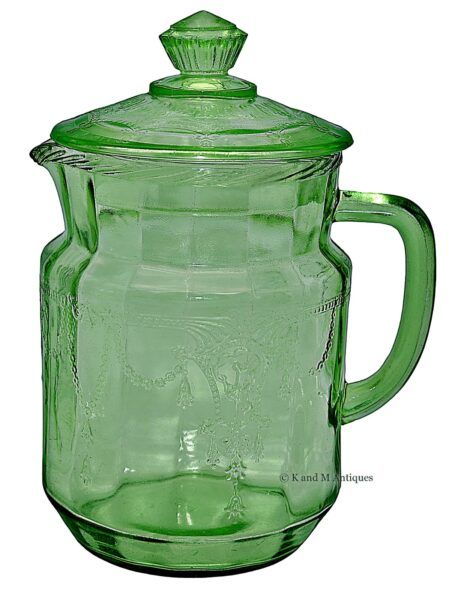#Depression #Glass #Patterns #Valuable #Today #WorthPoint
Though the Great Depression of the 1920s and 1930s caused profound economic hardships for the country, there were bright spots during one of the darkest times in American history.
Some glass companies survived during this time by making affordable glassware, commonly known as Depression glass, through the end of World War II in 1945. This beautiful glass, found in a rainbow of colors, is anything but depressing—it is widely collected and beloved today. Some patterns are also worth big bucks.
FACTORS THAT INCREASE VALUE
Depression-era glass on the market today is over a century old, which speaks to its timeless appeal. From simple ribbed designs to intricate floral ones, over one hundred patterns were made by around twenty manufacturers, and there are plenty of surviving pieces for collectors to choose from to add pops of color to their homes. However, not all patterns are equally valuable. While pieces in common patterns sell for under $20, others can fetch thousands.
A pattern is more valuable if it had a shorter production run with fewer surviving examples. But it’s not always the pattern itself that is rare and desired by collectors. Sometimes, the glassware’s colors, specific forms, and sizes make it coveted and valuable.
Here are five of the most valuable patterns to keep an eye out for when browsing in antique and thrift stores or sorting through your kitchen cabinet:
ADAM
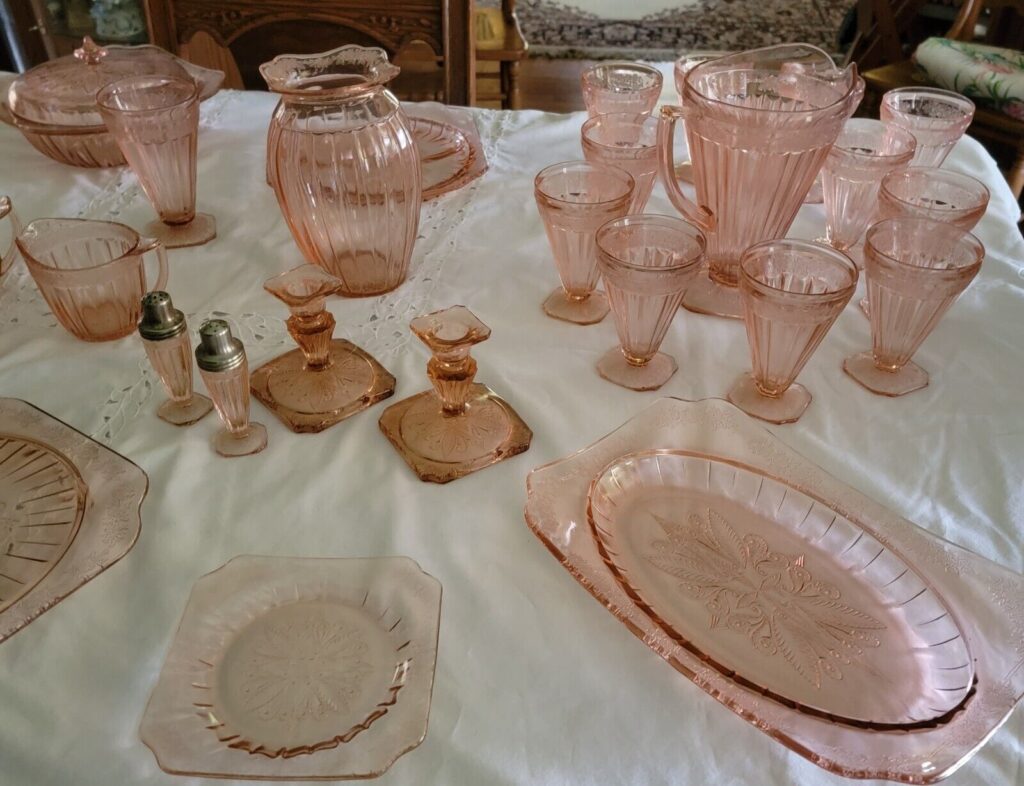
Adam is a coveted pattern produced from 1932 to 1934 by Jeannette Glass Company. Its mold-etched design features ribbed edges and tops, intricate floral cuts, and a paisley-like swirl design in the center of many pieces.
Adam is featured mainly on square-shaped items or pieces with wide rims or square collars like bowls, casseroles, luncheon and dinner plates, saucers, and vases.
The pattern was produced in five colors: green and pink, the two most common, in addition to the rarer crystal, delphite (a medium blue opaque), and yellow.
Most Adam items sell for around $20, depending on the piece and color. But some others are valuable, including a rare covered pink butter dish with an Adam base and a cover in Jeannette’s Sierra pattern. One of these sold for $1,250 in 2023.
AMERICAN SWEETHEART
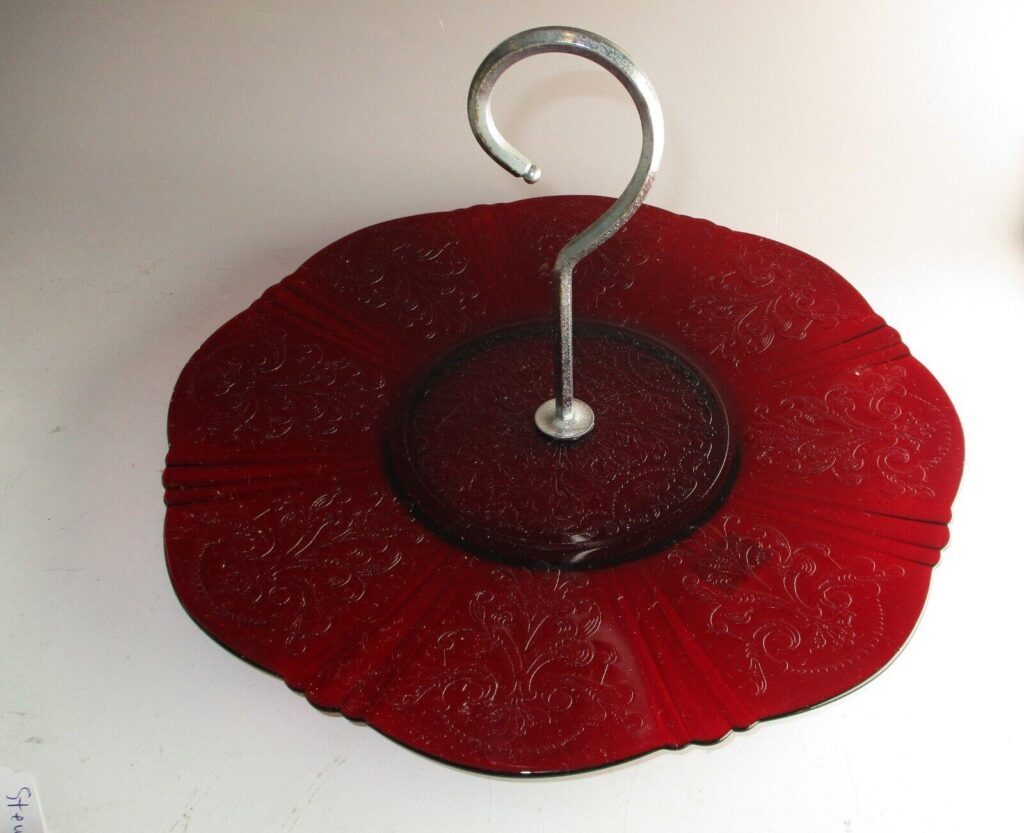
Produced by the prolific Depression glass manufacturer Macbeth-Evans Glass Company from 1930 to 1936, American Sweetheart features a mold-edged design of ruffles or scallops on most pieces, detailed scrollwork, and tiny lacy swirls forming the shape of a heart.
American Sweetheart was produced in large quantities of pink, and though these pieces are common, they are desirable to collectors today. Pieces were also made in a thin whitish glass called Monax and ruby red, the rarest color. Some scarce pieces were also made in blue and crystal.
While it’s not the rarest of patterns, it’s challenging to find American Sweetheart items in pristine condition, as its thin and delicate glass is prone to damage, making pieces with extra-fine edges scarce and valuable. Cake plates, pitchers, saucers, soup bowls, sugar and creamer sets, and tumblers are often worth the most, especially in pink.
Many pieces sell for under $10, while rare items are worth a lot more, like this pink water pitcher that sold for $895 in 2023.
CAMEO
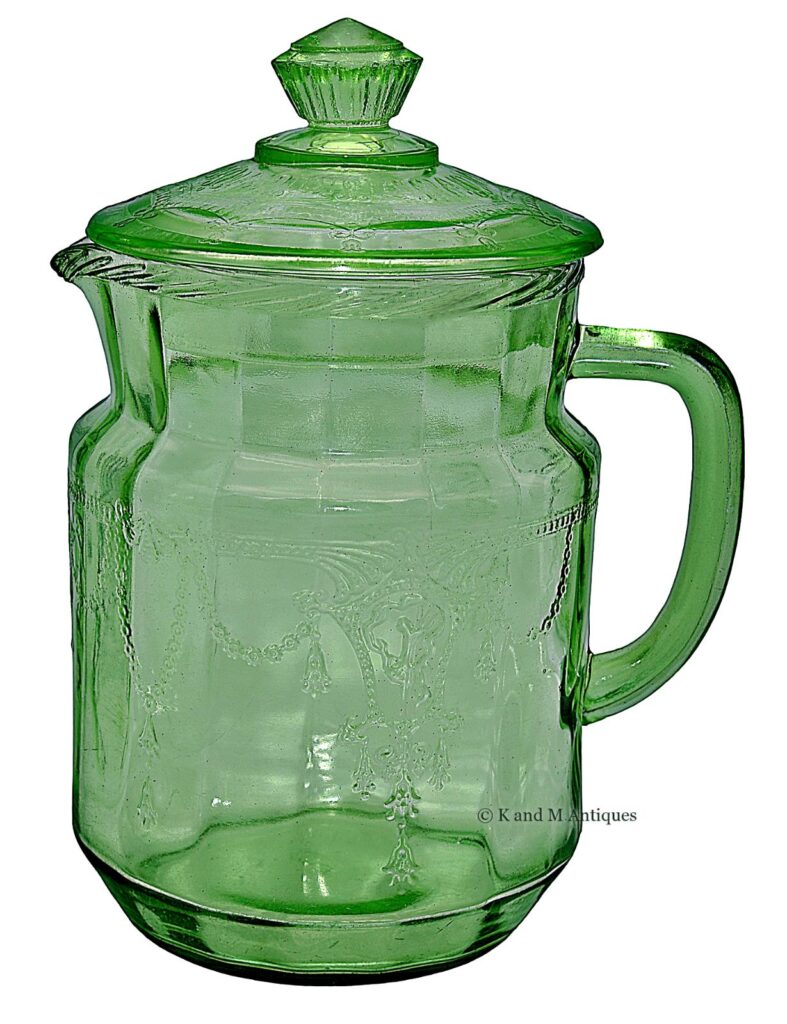
Some of the most coveted glass by collectors is from the early years of the Great Depression, including the extremely popular Cameo pattern. Produced by Hocking Glass (before it became Anchor-Hocking) from 1930 to 1934, Cameo was the glass company’s third-most-popular line. It’s a mold-etched pattern that features tiny pearls, swirling veils, and a silhouette of a dancing girl, hence its alternative names of Ballerina and Dancer.
Cameo pieces were created in crystal, green, pink, and yellow. Green items are the most common today; most sell between $5 and $25. On the other hand, pink and yellow pieces are rare due to limited production and can be worth hundreds. Some of the rarest pieces have a platinum rim. Some rare forms are also worth thousands, even in common green, like this sandwich server that sold for $3,999 in 2020.
MAYFAIR
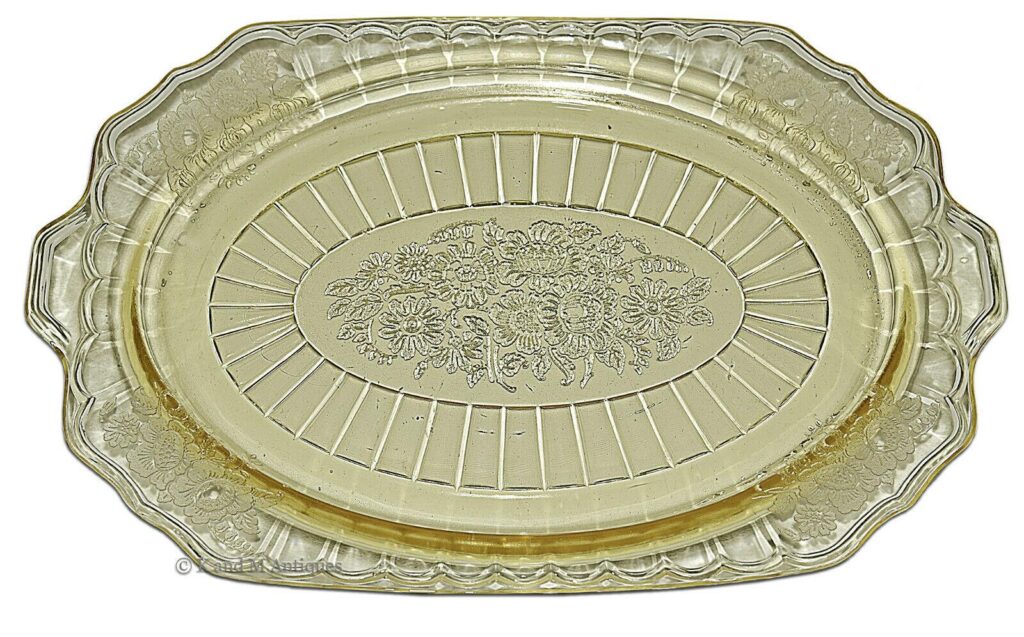
Mayfair, produced by Hocking Glass from 1931 to 1937, was one of the longer-running patterns and today is one of the most valuable and collected patterns. Also known as Open Rose or Pink Mayfair, its elegant and sophisticated art deco floral and geometric design features an open rose surrounded by intricate leaves.
Pieces were made in blue, green, pink, and yellow. Pink was the most popular color when the pattern first hit the market and remains so with collectors today. The most hunted and valuable pieces, however, are the blue ones. Most pieces of Mayfair in good condition sell for around $20, but rate items can fetch thousands, like this pink three-legged casserole bowl that sold for $3,250 in 2022.
ROYAL LACE
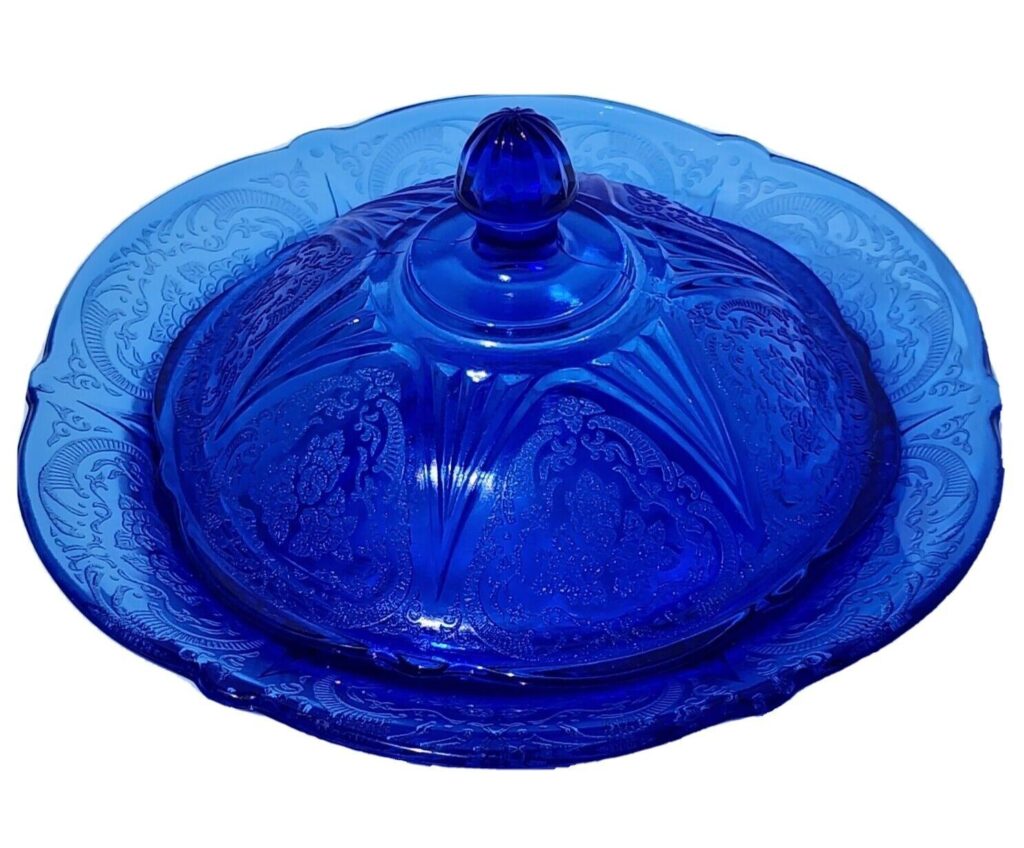
Royal Lace is one of the rarest patterns and arguably the most sought-after by collectors. Produced by the Hazel-Atlas Glass Company from 1934 to 1941, it features a repeated floral design of three roses in a triangular shape on all its panels, with a lacy outer pattern.
This pattern was manufactured in crystal, green, pink, and the signature color, cobalt blue, which was only produced from 1936 to 1941, making it more valuable than the other colors. Royal Lace pieces commonly sell for between $30 to $50, but rare pieces are worth a lot more, like this nut bowl that sold for $2,100 in 2022.
To learn more about identifying and valuing Depression glass, check out our Dictionary page. There are also many books on this cherished glassware in WorthPoint’s Library.
Adina K. Francis has been a writer and editor in the antiques and collectibles field for more than 20 years. She has a bit of an obsession with the Victorians and thinks that dogs are one of life’s greatest gifts.
WorthPoint—Discover. Value. Preserve.

